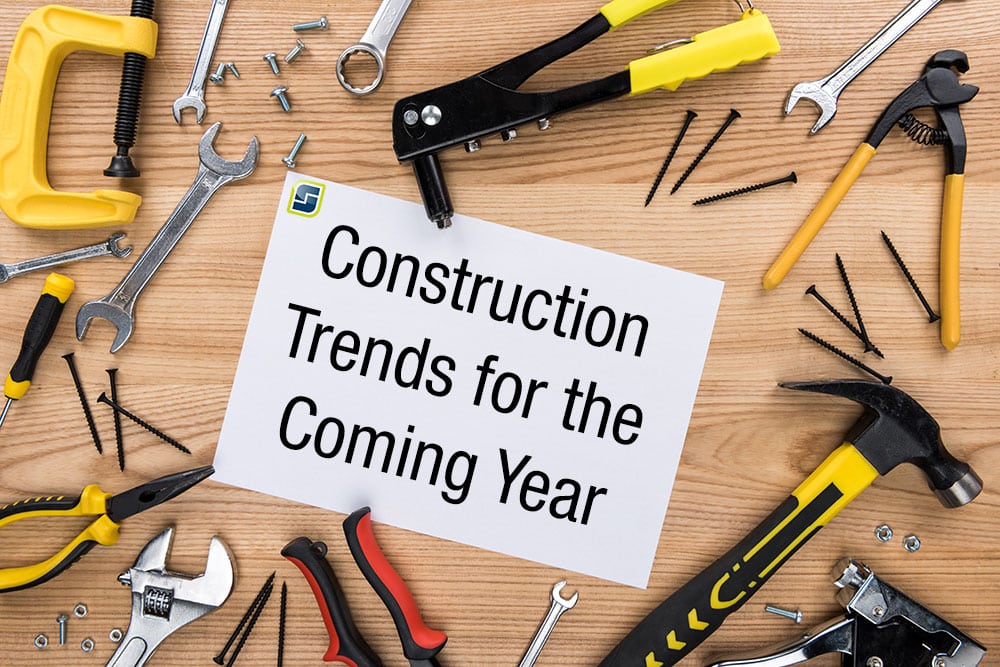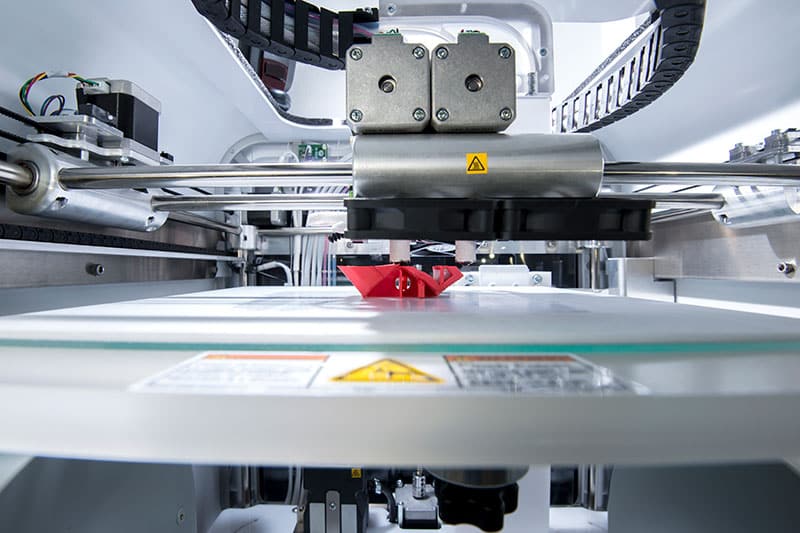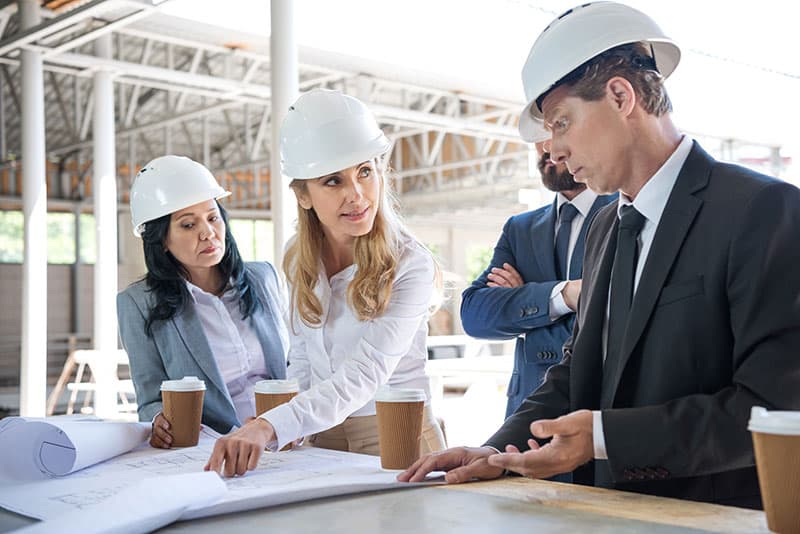Construction Trends for the Coming Year
Apr 20, 2018
As there have been significant developments in the construction industry over the last year, we thought that we would look to the future and what further changes we can expect to see in the industry.
Smart Homes
Smart home technology has become more prevalent in society over the past couple of years. The likes of Amazon’s Alexa and Google’s Assistant have quickly become commonplace in households all over the UK, yet 5 years ago they would have been merely a sci-fi concept.
Undoubtedly, home automation technology will continue to develop at a rapid rate over the next few years and devices that currently seem impossible could shortly become a reality. Smart home technology is designed to simplify everyday tasks for the homeowner and improve home security.
We spoke to Andrew Hemmings, one of our Biggleswade Trade Store Team Members, about these developing technologies and how it might impact our industry in the near future:
“Technology will take a vastly more prominent part in the new home. There is a lot of talk about ‘The Smart Home’, so gadgets – remotely controlled thermostats, switching for appliances, ‘at home’ sources of power generation, etc. power usage monitoring, ‘clever’ intruder alarms, which hardly featured 10 years ago, is now becoming the norm, and the younger buyer and millennials will automatically expect to see that type of technology in new homes & apartments.”
As there are so many emerging technologies, it’s almost impossible to determine what the average UK home will look like/be capable of in several years’ time. Let’s take a look at 5 developing home automation technologies that are likely to become more commonplace over the next few years.
Renewable Energy
Homeowners now have more options when it comes to home energy efficiency. More energy is coming from renewable sources, which not only helps cut costs but also reduces demand on the grid. Solar roof tiles and smart meters are becoming more commonplace in UK households, giving homeowners more insight into their personal energy consumption.
Reduce Gas Emissions
The likes of smart; thermostats, power strips, windows and lighting all help to reduce a home’s energy expenditure, simplifying everyday tasks for the homeowner, and helping reduce our carbon footprint.
Living Walls
Companies are developing smart ‘living walls’ that use artificial intelligence to purify the air and extract pollutants.
Zone-Based Thermostats
Programmable zone-based thermostats enable homeowners to turn their heating down or up via their smart phone or tablet. Zone-based thermostats only heat areas of the house that detect occupants, rather than wasting energy in unoccupied rooms.
Automated Door Locks
We have already seen this become a reality with cars and it is likely to become commonplace in households all over the UK and the rest of the world over the next couple of years. Smart locks detect when the key is in a specified radius, automatically triggering the door to unlock.
Technological Advances
3D Printing
Using computers to print layers of material to create 3 dimensional shapes is currently an efficient way to produce prototypes. As 3D printing is seen as an effective and eco-friendly way of constructing, compared to traditional methods, we are likely to see more manufacturers trying to take advantage of the technology. The race is on to create the first 3D printed house!
In Texas a protoype is already underway, using £7,000 of concrete and just 48 hours a one story, 380 sq ft house was built (Source: BBC News). The building used 3D printing technology, layering up mortar and using an enormous metal frame, robots operate freely under instruction, following a CAD blueprint.
More plans are being unveiled to create the first 3D printed one-bedroom house in Europe, where a robot will use special cement, that has been mixed to cure quickly, allowing a quick turnaround (Source: dezeen).
Drones / Robotics
Drone technology could be an effective way to monitor construction sites, through accurate surveys, distance measuring, contour maps, photos and video. This gives you the opportunity to use this information to better inform your building projects and produce accurate, smarter plans and quality control and ultimately helping manual job efficiency in the future.
“Faster and low labour input systems such as robot and brick block layers could be big players in the future.
– Andrew Hemmings, Biggleswade Trade Store
Virtual Reality & Augmented reality
VR and augmented reality technology will play a key role in attracting potential buyers, providing virtual representations of buildings and the ability for homeowners to walk through their houses before they are even built.
Two-bed flats for sale, starting from £1.2m, at Battersea Power Station, are offering an immersive 3D experience at the showroom, giving interested buyers the ability to imagine their lives there, years before the whole completion of the site.
It can also be used at construction level to give powerful safety training, pitch ideas, and interpret data. We are already seeing the use of ‘smart glasses’ which deliver data directly to the wearer in real-time.
IoT
The Internet of Things is in simple terms connecting devices over the internet, so that they can communicate with us, each other and different applications. Not only will IoT power smart homes, it will also influence how we design and build them. Here are just some of the ways in which IoT will influence our industry:
Remote Operation
Giving us the ability to work in areas that may have otherwise been hazardous to people. Construction workers can then give instructions to the machine virtually, to complete certain jobs.
Replenishment
Devices will be able to monitor and count supplies and then automatically replenish from a central system. This in turn will help efficiency, and projects being completed on time. Cost should also have a positive impact, and excess material and supplies shouldn’t be ordered.
Construction Tools
Specialised landscape equipment will be able to monitor landscapes and terrains, using GPS data and virtual maps. Specific instruction will then be given to position the machine perfectly to dig, cut or drill through that specific land matter, in an efficient time, with the correct equipment.
Greener Energy Usage
By tracking the amount of electricity used on site during all hours of the day, this information can be used to adjust idle time, lighting for night workers, and fuel consumption.
Modular Buildings
Modular construction is essentially the building of a structure off-site, which is then transported to its desired location, meaning up to 80% of the construction work happens off-site. This can be hugely efficient, as work on site then becomes 65% faster (Source: GenieBelt).
This technology isn’t reserved for houses only, as it’s recently be used to develop a 32 story apartment block in New York.
“Concrete ‘printed’ structures are being developed, along with modular and pod style buildings, which can be manufactured off site, and installed very quickly with very little finishing needed.”
– Andrew Hemmings, Biggleswade Trade Store
There are multiple benefits to modular buildings, including:
- Reducing the risk of accidents on-site
- Safeguarding the original landscape of the site
- Time efficient
- Cost-effective
There are also negatives to consider, including:
- Lack of customisation
- Cost of land, not just the home
- More complicated mortgage process
- Perceived lower quality
Green Design
With society becoming ever more conscious of our carbon footprint and environmental impact, the construction industry needs to revise its own practices. LEED, or Leadership in Energy and Environmental Design ‘is the most widely used green building rating system in the world. Available for virtually all building, community and home project types, LEED provides a framework to create healthy, highly efficient and cost-saving green buildings. LEED certification is a globally recognized symbol of sustainability achievement.’ (Source: LEED)
We can expect to see legislation and laws enforced over the next few years, instigating construction companies to rethink their environmental responsibility.
Find out more about the LEED rating system
House Builds
Last year The Mayor of London, Sadiq Khan, announced his plans for doubling the annual house builds in London to 66,000 in a year. It was announced that City Hall are to utilise £250 million for buying and preparing land for these new developments, with the intention that this investment will be recycled, funding the purchase of further land and home builds.
Read more on the plans to double annual house builds in London
It’s not just London that is set to see an investment in new homes, the New Forest is to see 10,000 new homes built over the next 20 years, with more plans across the South within the next few years.
In his 2017 Autumn Budget Statement, Chancellor Phillip Hammond announced plans for financial support for 300,000 new homes a year.
Read more on the 2017 Autumn Budget
With new large-scale construction plans being announced for the UK, industry professionals can rest assured that there will be a rise in demand for UK based construction workers.
A Rising Demand for Construction Workers
With the announcement of the new plans for house builds in London, greenbelt towns and other development projects across the country, it is inevitable that there is a rising demand for skilled construction workers in the UK. 179,000 construction sector jobs are predicted to be created over the next 5 years, and it’s also predicted that by 2021, output will grow by 1.7% a year.
To meet housebuilding targets, recruitment in the construction sector is set to accelerate. According to the Royal Institute of Chartered Surveyors, ‘Almost two-thirds of surveyors said a lack of skilled workers is a key factor limiting building activity’ (Source: The Telegraph). Employment in the construction industry between June 2016 and June 2017 saw a rise of 45,000 people.
To address the rising demand, the government have pledged £34bn towards training in the construction industry, building skills in areas including brick laying and plastering. £20m will go towards the introduction of T-levels, training students in practical skills.
Read more on T-levels
Women in construction
It’s no secret that construction is a male-dominated industry, but over the last couple of years we have seen the number of women in construction rise. With an imminent demand for more construction workers in the UK, more needs to be done to encourage women to pursue a career in construction. ‘Construction is a major pillar of the UK’s economy, employing around 2.1 million people. But women makeup just 11% of this industry and are paid 12% less, on average, than men carrying out the same role.’ (Source: Women in Construction Summit)
Over the next few years, we can expect to see a rise in the number of women joining the industry with efforts being made to encourage gender equality and shift preconceptions of the industry.
Read more on women in construction here
Onwards and Upwards
2018 promises to be an exciting year for the UK construction industry, with plenty of new challenges and opportunities just around the corner. With technology rapidly advancing, who know what the industry will look like in 5 to 10 years! As long as we stay ahead of the trends and identify best practices, together we will lead the industry into a new era.
Here at strukta we are always looking out for new trends and ways to improve processes. We’d love to hear strukta customers’ ideas and thoughts about the exciting future of construction.
Why not follow us on social media to find out more about what we are doing or tell us your thoughts.









